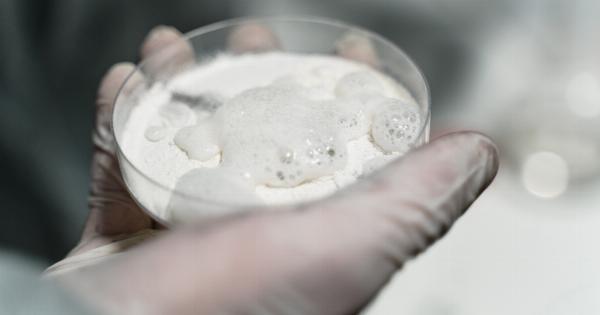Acute otitis is a condition that may lead to severe ear pain and other symptoms such as nausea, fever, and headache. It is caused by inflammation of the middle ear, which can be due to allergies, infection, or fluid buildup.
One of the many ways to relieve the symptoms of acute otitis is by chewing gum. This article will discuss how chewing gum helps to ease acute otitis and what the scientific evidence has to say about this treatment approach.
How Chewing Gum Works in Easing Acute Otitis
Chewing gum works by providing a mechanism for opening up the Eustachian tube, which is the narrow canal that connects the middle ear to the back of the throat.
When this tube is blocked due to inflammation or fluid buildup, it can cause ear pain and other symptoms of acute otitis. Chewing gum helps to stimulate the muscles in the jaw and throat, which in turn creates pressure changes in the Eustachian tube, leading to its opening. This allows the fluid to drain from the middle ear, relieving ear pain and other symptoms.
Chewing gum can also help to produce more saliva, which is an excellent natural antiseptic that can help to kill harmful bacteria that may be present in the mouth and throat.
This way, it can reduce the chances of developing a bacterial infection, which is one of the causes of acute otitis.
Scientific Evidence Behind Chewing Gum as a Treatment for Acute Otitis
Several scientific studies have been conducted to examine the effectiveness of chewing gum in easing the symptoms of acute otitis.
A 2008 study published in the Journal of the Royal Society of Medicine found that chewing gum can help to ease the pain of acute otitis, reduce inflammation, and speed up recovery time. Another study published in the International Journal of Pediatric Otorhinolaryngology found that chewing gum can increase salivary flow and have a significant effect in opening the Eustachian tube among children with acute otitis.
A more recent study published in the Journal of Laryngology and Otology in 2014 showed that chewing gum can significantly improve both symptoms and inflammation in adults with acute otitis.
The study also showed that chewing gum is more effective than nasal decongestants, which are commonly used to relieve the symptoms of acute otitis.
How to Use Chewing Gum as a Treatment for Acute Otitis
Chewing gum is a simple and easy way to relieve the symptoms of acute otitis. Here are the steps to follow:.
- Pick a sugar-free gum to avoid the risk of tooth decay.
- Chew the gum slowly and gradually to stimulate saliva production and relieve the pressure in the Eustachian tube.
- Choose a gum with a strong flavor, such as peppermint or cinnamon, to help stimulate saliva production further.
- Chew the gum for at least 20 minutes every hour to promote drainage of fluids from the middle ear and relieve pain.
- Dispose of the gum after 20-30 minutes of chewing to avoid swallowing it accidentally or choking on it.
Precautions When Using Chewing Gum as a Treatment for Acute Otitis
While chewing gum is generally safe and effective in easing the symptoms of acute otitis, there are some precautions that you should take:.
- Avoid chewing gum if you have a history of temporomandibular joint (TMJ) disorder, as it may cause pain or discomfort.
- Avoid chewing gum if you have recently undergone any ear surgeries or had injuries to the head or neck. Consult your doctor before using this method as a treatment for acute otitis.
- Avoid chewing gum if you have any allergies to the ingredients used in the gum, such as artificial sweeteners or flavorings.
- Do not give chewing gum to young children who are at risk of swallowing it and choking on it. Consult your doctor before using this method with children.
Conclusion
Chewing gum is a simple and easy way to relieve the symptoms of acute otitis.
Scientific evidence has shown that it can help to open up the Eustachian tube, stimulate saliva production, and reduce inflammation, providing a natural and effective way to ease ear pain and other symptoms. However, it is essential to take precautions and consult with your doctor before using this method, especially if you have any pre-existing conditions or allergies.





























